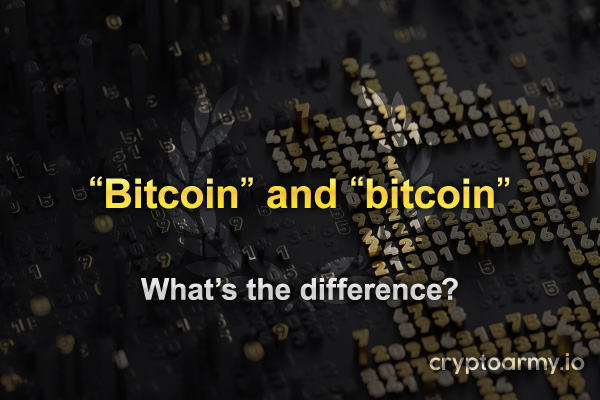
One of the most common misconceptions when talking about the most popular digital cryptocurrency is the differentiation between Bitcoin and bitcoin.
Bitcoin (written with a capital B) defines the entire network upon which the cryptocurrency system is built.
When referring to Bitcoin, it’s the blockchain technology that is being referenced, the system that makes use of all of the necessary confirmations needed for new blocks to be added to the chain (i.e. the public ledger).
The other bitcoin (always written with a lower-case ‘b’) refers to the actual currency, which runs on the Bitcoin network.
Mining
To mine bitcoin you need software and a computer built for the specific purpose of mining.
The goal of the miner is to figure out a hash of the block that is equal to or less than a specific target.
If all information in the block header remains constant, the result of SHA-256 will always be the same – see the section on Cryptography to get a refresher on the SHA.
In cryptography, a nonce is an arbitrary number that can only be used once.
That’s why it is included in the header – every time the calculated hash of the block header fails to meet the targeted range, the nonce is increased and the hash is re-calculated until it ultimately reaches its target.
Miners with the most powerful computing devices will have an advantage – the total number of possible answers is close to 1077, which requires a lot of power and speed.
Since there is no logic when calculating the winning hash, bruteforce should be followed.
Once the winning targeted hash is calculated, the block is included in the blockchain and the reward is granted to the victorious miner.
Currently, a block is included in the blockchain every 10 or so minutes and a single block may contain approximately 1,000 transactions.
Block Reward
As nodes need to solve cryptographic puzzles on a P2P network through the use of bruteforce, and the number of possible combinations is about 1077, Satoshi Nakamoto decided to include an incentive in the Bitcoin system to make up for all these great efforts.
The first node to solve the puzzle will be awarded with a reward, which is known as the “block reward”.
The first ever reward was set at 50 bitcoins. In reality, every time a new block is included in the blockchain, it generates a corresponding reward anew.
Nakamoto also figured out a way to control the creation of new bitcoins, by setting a limit of up to around 10 minutes between new blocks being included in the blockchain.
Looking at it this way, you can say a cryptographic puzzle is solved every 10 or so minutes.
That means 144 blocks per day or 52560 per year.
As more nodes and more powerful computers join the network, puzzles will be solved much faster.
To avoid any inflationary trends, Nakamoto also included a parameter called ‘Difficulty’ in the protocol.
This increases the number of leading zeros in the resulting hash when a node tries to solve the puzzle.
In addition to this, the block reward is halved every 210,000 blocks (which is approximately every 4 years).
The last reward will be awarded in the year 2140.






Comment by jetonwhy
February 16, 2025
Anyone else finding it weird that Deriv only allows deposits through Jeton and not bank transfers? They’ve removed crypto too, so now it’s just cards and Jeton. Kinda frustratin...